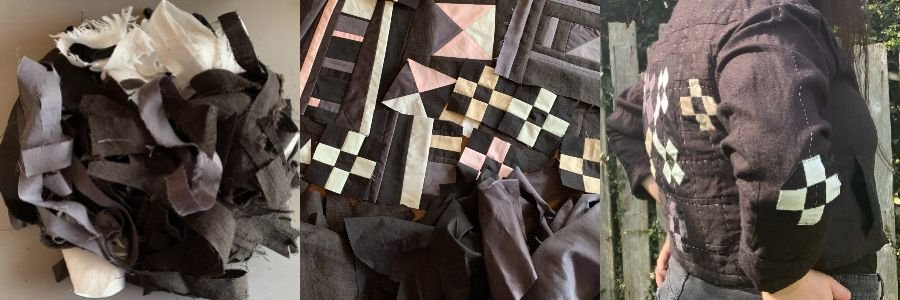Circular Textiles
What is the Circular Economy and how can it apply to fashion and textiles?
The Ellen MacArthur Foundation is probably the leading research, advocacy, and education organisation for circular economy, and they define CE as “...based on three principles, driven by design: eliminate waste and pollution, circulate products and materials (at their highest value), and regenerate nature.”
Basically, instead of the linear process of making something, using it, and throwing it out when finished or broken, in a circular economy products are more durable, repairable, and their elements more easily and fully recyclable, theoretically eliminating waste altogether.
In the realm of fashion and textiles, this can present as a range of interventions to prevent waste. We are familiar with some, such as second-hand, vintage, or charity resale, which maintains textiles products such as clothing at their highest value. The most materially and environmentally efficient thing a used coat can do is, after all, continue being a coat. Both the designer and the user(s) make many decisions impacting the longevity and “circularity” of any given garment, right down to how we wash our clothing (dictated by anything from the designer’s choice of fabric, to the user’s attitudes to laundry). We are also seeing the emergence of recycled fibres (though these have many of their own problems and are often not recyclable*) especially in synthetics and performance fabrics.
What is interesting to me is what happens to various grades of clothing and home textiles which cannot be reused as-is, because of soiling or damage, or even obsolescence. This is where more innovative business models step in. Can the damaged garment can be repaired for the owner, or renewed/upcycled and sold on to a new owner? Can portions of cloth or buttons or zippers can be recovered from the soiled item to supply local makers? Can the fabric can be broken down and recycled on a fibre level*?
*spoiler alert: this is very difficult as it almost always requires mono-fibre input (no poly-cottons or viscose-blends), uses enormous resources to chemically and/or mechanically process, and, depending on the fibre, outputs at lower quality than virgin, often necessitating blending with other fibres, thus rendering them unrecyclable down the line.
As a materials-first designer, my work takes shape by responding to materials on hand. Like foodstuffs with an approaching use-by date, available fabric calls out to me to be reused. The resources and labour required to produce spun fibres, woven cloth, and constructed garments are immense, a reality from which “fast fashion” has broadly succeeded in divorcing many Western consumers.
My motivation to reuse what is already available is to react to the wasteful surplus generated by overproduction and overconsumption, and to reinforce the resource value of such textiles and the many hands that produced them. As an independent maker, I can’t affect systemic change, but I hope that by working and speaking according to my values and engaging with other businesses who share or overlap with my values, we build more effective and efficient ways to maximise reuse and reduce waste, while also creating beautiful, durable, repairable, heirloom products.
For more about the general concept of Circular Economy and the specific challenges it poses and faces within our current systems, I highly recommend this comic strip by 360dialogues, available free on their site.
If you liked reading this, please sign up for my occasional email newsletter at the NEWSLETTER tab here on the website.


